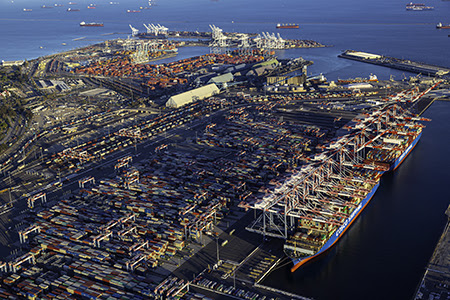Back-to-school and the fall/winter holidays may seem like a long time away.
But in the cargo and shipping world, they’re all fast approaching — though tariffs are causing uncertainty.
“Peak season starts in July,” Port of Long Beach CEO Mario Cordero said Friday, May 2, referring to the time when shippers begin sending over fall goods for stores. This is the time, he said, when they begin looking to order those goods.
“But they’re not doing it,” Cordero said, “and the more we delay, the increased chance there will be that we won’t have those precuts on the store shelves.”
Both the ports of L.A. and Long Beach are anticipating a drop in incoming cargo — including a sharp rise in blank or canceled sailings, and partially loaded ships — in the weeks to come as importers wait out more news on the back-and-forth tariff discussions, primarily between the U.S. and its primary trade partner, China.
“If you’re a shipper, you don’t know what the future is,” Cordero said, noting that the Port of Long Beach ranked as the nation’s busiest port in the first three months of 2025, topping even its larger neighbor, the Port of L.A.
Looking ahead, cargo is expected to drop significantly at both seaports as shippers hold back.
“It’s a lack of clarity,” Cordero said in a telephone interview, “and what I’ve called a ‘radical’ uncertainty. If you’re a shipper and have products in China when there’s a 145% tariff, you’re going to want to wait if you believe this is going to be mitigated in the months to come.”
The Marine Exchange of Southern California is already seeing a dip in container ship arrivals in San Pedro Bay, where ships enter for both ports, and the slowdown is expected to continue for the next one- to two weeks, according to a Thursday, May 1, report from the facility that tracks ship traffic.
“Dip in container ship arrivals started,” the report states. “For example, only 14 arrived past three days, and…
Read the full article here







